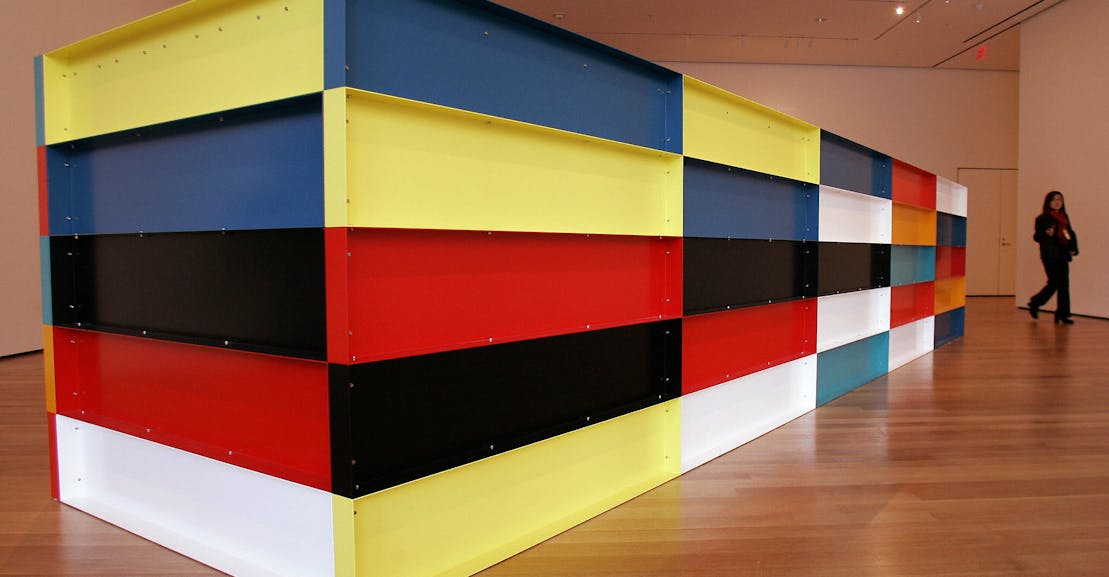
How did the United States, a nation whose credo is consumption, where the average household owns 300,000 items, and where bigger is assumed to be better, come to embrace an anti-consumerist, austerely styled trend—and one with the same name as a 1960s art movement? Or, as journalist Kyle Chayka puts it in his new book, The Longing for Less: “How did an unlikely avant-garde phenomenon become the generic luxury style of the 2010s, both an aesthetic commodity and an ascetic philosophy at the same time?” The book doesn’t completely answer that question, nor does it attempt to present a definitive history. Instead, Chayka wants “to uncover a minimalism of ideas,” tracing the thought that less could be more through movements and moments in art and architecture, sound and music, and philosophy. The minimalism he finds is not about getting organized in order to regain control (or the illusion thereof); it’s about exploring the artistic and existential possibilities of reduction.
“Minimalism” is now an accepted historical term and a mainstay in any museum telling the story of modern art, but the artists to whom the word was applied never liked it. In New York City in the 1960s, Donald Judd, Dan Flavin, Robert Morris, and others began showing works that didn’t look like what was commonly accepted as art. In contrast to the gestural brushstrokes of Abstract Expressionism or the meditative marks of Color Field painting—two dominant styles of the preceding decade—these artists presented simple, solitary, often geometric objects that seemed to contain no symbolism or reference points. Whether Flavin’s fluorescent light bulbs or Morris’s painted plywood slabs and shapes, these works did not seem to represent anything beyond themselves.
In 1965, Judd wrote an essay championing this quality. “It isn’t necessary for a work to have a lot of things to look at, to compare, to analyze one by one, to contemplate,” he proposed. “The thing as a whole, its quality as a whole, is what is interesting.” He noted the prevalence of unusual materials, especially industrial ones reminiscent of modernist architecture, like the metals he used to make the freestanding boxes and wall-mounted, stacked rectangles for which he would be known. Judd identified these “specific objects” as neither painting nor sculpture and thus free from the associations and limitations of those mediums. In the new style, “a work can be as powerful as it can be thought to be,” he wrote.
At first, onlookers didn’t know what to do with these objects. Critics complained and called them different names: “ABC Art,” “Literal Art,” even “Boring Art.” The term “Minimalism” ultimately arose from a 1965 essay by the British philosopher Richard Wollheim titled “Minimal Art,” in which he considered the value of different types of work with “minimal art content.” Somewhat ironically, given that the label clung to them for the rest of their careers, Wollheim wasn’t actually writing about Judd and his contemporaries.
from Hacker News https://ift.tt/3aCYQn8
No comments:
Post a Comment
Note: Only a member of this blog may post a comment.